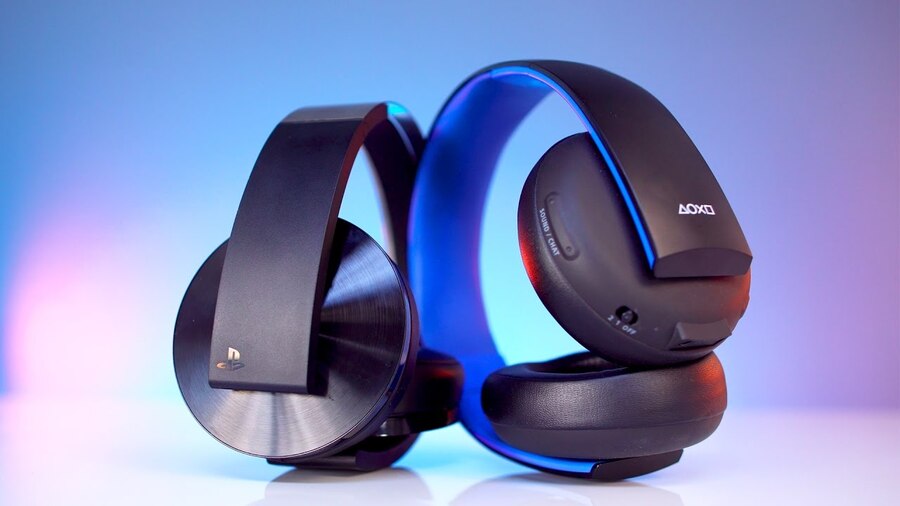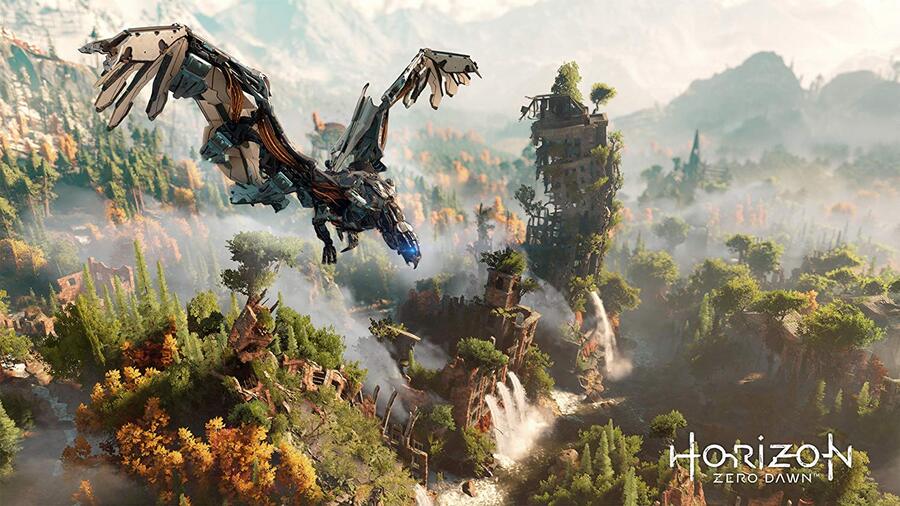
Stop me if you’ve heard this one before: diminishing returns. Whenever there’s a new console lurking around the corner, you can guarantee you’ll stumble upon at least one spoilsport, cynically proclaiming that video games have reached their peak. The insinuation is often that, even with all of the computational power in the world, it’s difficult to deliver an experience noticeably superior to the ones we’ve already got. But I tend to find this argument short-sighted, because it seems to centre on the idea that only visuals improve on a generational basis, when in reality you simply couldn’t deliver a world as vast and richly detailed as, say, Horizon: Zero Dawn on the PlayStation 3.
It also ignores the fact that new hardware tends to innovate in other areas, and I’ve been particularly excited by Sony’s decision to spotlight 3D audio in the PlayStation 5. You may recall all the way back in January that the manufacturer acquired multiformat middleware organisation Audiokinetic, which specialises in software solutions for all kinds of virtual sound systems. At the time, the company’s founder Martin Klein explained that his firm was “excited about the opportunity to contribute to SIE at a platform level”, and now we know why.
Subscribe to Push Square on YouTube166k
As confirmed by system architect Mark Cerny in an interview with Wired, the PS5 will include a custom hardware chip designed to process 3D audio specifically. This, we suspect, will be similar to the type of technology included in PlayStation VR’s cumbersome Processing Unit, and it will benefit all kinds of audio hardware – although headphone wearers will get the best experience overall. In the aforementioned report, the Marble Madness man suggested he was frustrated by the lack of audio innovation between the PS3 and PS4, and he hinted that Sony has gone the extra mile in order to rectify this.

During an investor relations presentation this week, the Japanese giant said that the future of PlayStation is being built with two words in mind: immersive and seamless. Anyone who’s used PSVR will know just how much audio positioning feeds into the idea of “presence”. For example, we recently went on a tour of London Studio, and it told us that during the development of Blood & Truth’s shooting gallery minigames, its ambition was for players to be able to complete them blindfolded. “You should be able to hear where the targets are,” a gameplay designer informed us.
This is the difference between 3D audio and basic panning. If you’re not familiar with the idea, then there’s a very famous YouTube video which is well worth experiencing. In it, you’re cast as a customer in a barber shop, and the action takes place all around you. Close your eyes and you can quite literally sense where sounds are coming from; your brain builds a picture of everything that’s happening around you, in all dimensions, without you even needing to use your eyes. It’s incredibly immersive, and when accompanied by visuals, it heightens the impact of a given scene.
I think this kind of technology definitely excels in virtual reality, where turning your head alters the position of all the sounds that you’re hearing – but it can be powerful in a more traditional experience, too. Imagine being able to more accurately pinpoint the direction of an enemy’s footsteps in a first-person shooter like Tom Clancy’s Rainbow Six: Siege – or how much drama it could add to a third-person horror title like The Last of Us: Part II. There are already a handful of PS4 titles like Uncharted 4: A Thief’s End which support the technology, but as Cerny himself says, “the dream is to show how dramatically different the audio experience can be when we apply significant amounts of hardware horsepower to it”.

And this is something worth getting excited over. Video games are inherently a visual medium, and so our minds immediately leap to the graphics when we begin to think about new hardware. But there’s going to be more to the PS5 than its looks, and so I’m just as excited to hear what the console can do as I am to see it with my eyes. It’s really exciting to learn that Sony wants to innovate in this often overlooked area, and as someone who’s been fascinated by 3D audio long before the ASMR craze kicked off, I really can’t wait to see how this helps to improve the immersion of next-gen games.
Are you excited for the potential 3D audio will enable on the PS5? Do you think sound is an underrated aspect of gaming? Hear all around you in the comments section below.





Comments 27
Dolby Atmos please. I'm not sure if it's exactly the same, but the 3D audio in VR games doesn't seem all that impressive to me, and I'm pretty picky about audio.
In general, I hope the audio quality is a step forward. For whatever reason, audio on PS3 sounds better to me than PS4
Yeahhhh I don’t play with headphones. I’d like to, but it’s too unsociable, and my girlfriend is tolerant enough of my gaming, so I’m gunna miss out on this unfortunately. I do love my audio so that’s sad.
Although, I do plan on getting a VR at some point for occasional use so I guess I’d enjoy it then.
I'm a huge audio dork, and 3D audio is a big reason why I bought the Platinum Headset, so I was thrilled when this part was announced
@kyleforrester87 VR is extremely unsociable!
@mclarenrob2 dats y I sed ocashunal use
While I'm sure games running in native 4K will be a big part of this system's appeal for a lot of people, I've also been happy with loading time and audio improvements being highlighted in particular. Unless my 1080p set dies, I have no plans to replace my HDTV any time soon.
I’ve never understood why headsets are said to benefit more than a proper surround sound setup....
3D ASMR Cerny narrating Knack 3. I figured it out.
We had 3D audio for The Last of Us. No other Dev's chose to use it. Still I see it as a good thing as long as most games will use 3D audio in their games. but i feel i will put my headphones on try it for a hour or two then take them off.
I have Sony platinum headset and its amazing, also some of there headphones ect are rated the best on market I trust them when it comes to sound
It's great. I still think there's going to be a significant graphic upgrade though. Just my thought
@JJ2 Oh there will be, of course. But the 3D audio should be really impressive, too.
Yea. What's also cool is there's no resolution war this time 4k is what we get for sure. That's one little war sorted
I think the 5.1 sound from the standard sony cans is pretty decent. Cant wait to see what the 3d sound is like. I've not played senua sacrifice yet but guessing that would be amazing with 3d sound set up
I remember that barber shop video well.
I just hope that there's less interference on PS5 when plugging headphones into the controller. Sometimes I don't have an issue, but, other times, the audio is very distorted, and I'm never sure what's changing to impact the quality of the audio streaming so drastically.
I absolutely love having a headphone jack on the controller, though, as someone who prefers to use headphones more often than not when gaming.
Can we get 3d audio without headphones ??
Sadly know body will care about 3d audio kind of like how nobody cares about the Switch's HD rumble. Good thing is 3d audio wo't make the prices of the controllers to go up like all the useless features in the Switch and PS4 controllers.
I don't know if its a 'game changer' for Sony as its not different from Dolby Atmos or Windows Sonic on Xbox as well as the fact that 4k HDR Blurays, SkyQ, Netflix etc offer Atmos. If anything, its Sony catching up with other media and their closest rival.
For Sony gamers, maybe it will be a 'breakthrough', something that adds an extra dimension to their audio experience but its not 'new' to gaming in general.
Its like saying 4k HDR Bluray drive is a 'game changer' despite the fact that other devices already offer that...
It is a pity Sony only makes PS4s (and surely PS 5) compatible with the worst headphones of their company (Gold Headset) with mediocre sound specs and not even Bluetooth compatibility with other devices such as mobiles.
Just add atmos for headphones like xbox. Sony is stagnated in sound/video options.
I don't think we are anywhere near the peak of graphical prowess in gaming. However where I do see distinct diminishing returns is in 4K and 8K TVs. People online seem to love those big numbers but even when I look in a store, where they have 1080, 4K and 8K side by side... 8K isn't that much better than even 1080, even with video designed to show it off. It's a bit crisper, the colors are a bit deeper, but not that much. Not really.
But isn’t “stereo” already 3D audio? To have 360 sound delivery you need speakers all round your room no? I can’t help but feel this is a buzz word Sony has come up with to differentiate PS5 and make it sound advanced. Happy to be proven wrong though!
@JoeBlogs just wanted to say a completely agree with this request. Games like Spider-Man make my Pro sound like it’s going to explode. It’s louder than my TV and speakers, which I have on quite a loud setting.
Love the 3D audio in VR. Look forward to it progressing.
I wait till I actually experience it before totally dismissing it, but I think the vast majority of PS5 users won't even know it is there. I have the Platinum headphones and haven't noticed anything amazing in regards to 3D audio. So I either haven't played any games that support it or I have a total brain fart with it.
Irrelevant as far as I'm concerned. My setup isn't suited to a surround system, and I'll never wear a full headset as I can't stand having anything over my head. Even if that weren't an issue, as a full-time carer, I can't shut myself off from my surroundings like that.
id prefer if ps5 concentrated on games not releasing half finished missing features broken. and begging for a dollar everytime you load the bloody thing.
Show Comments
Leave A Comment
Hold on there, you need to login to post a comment...